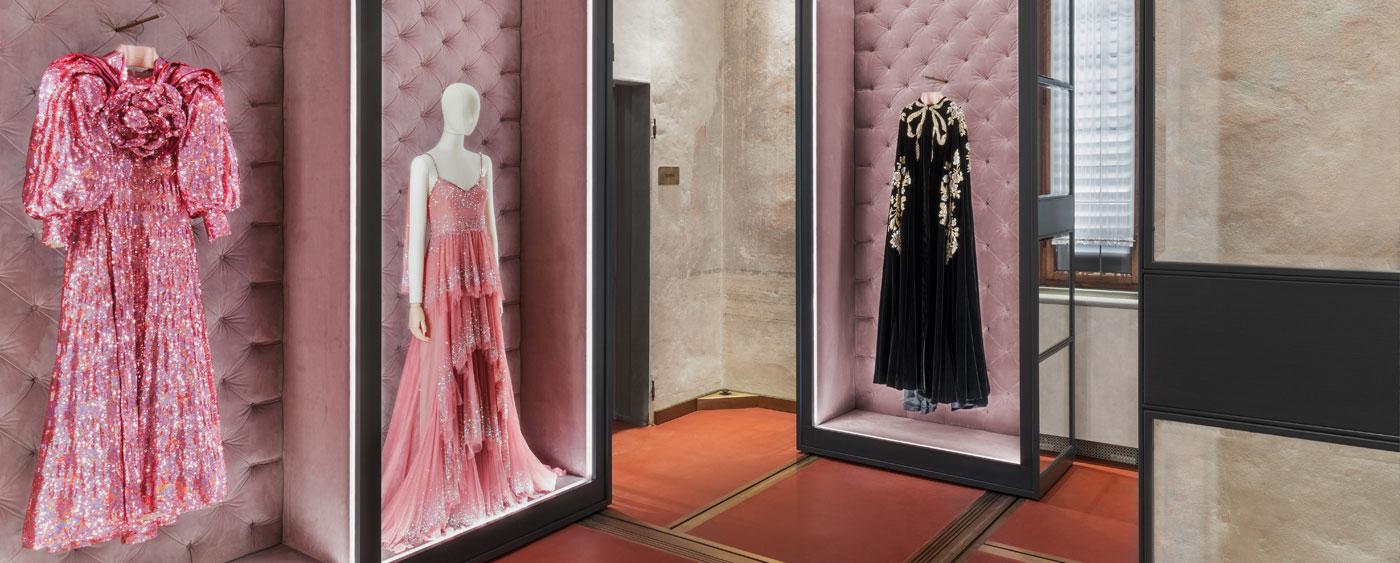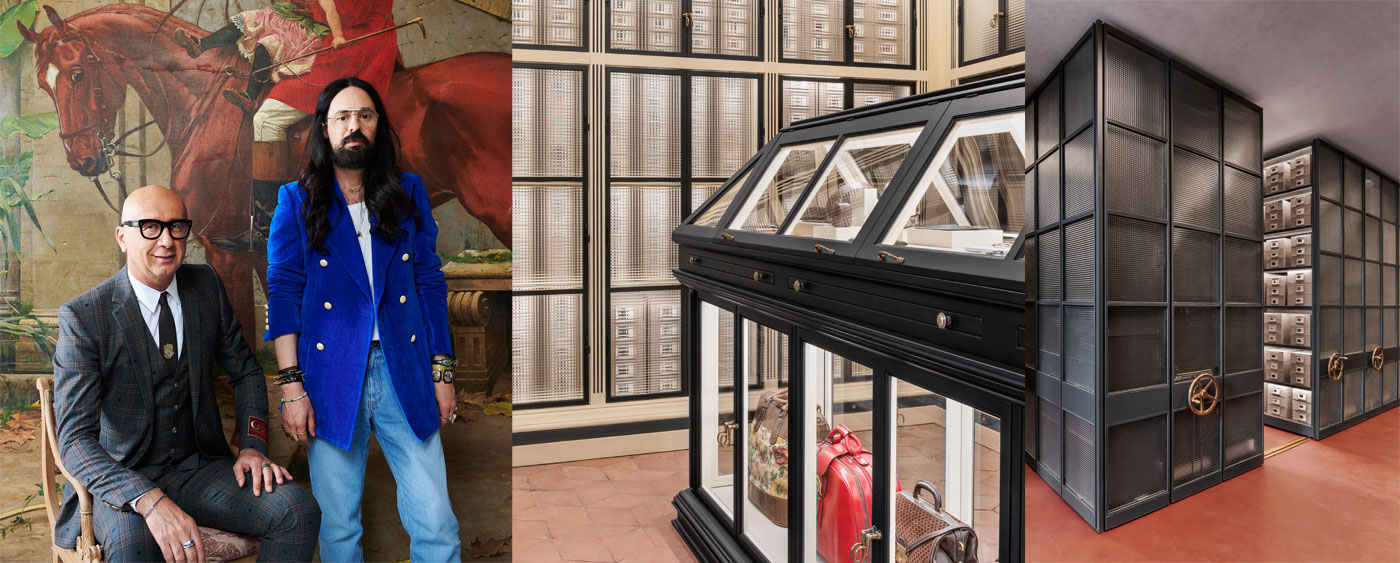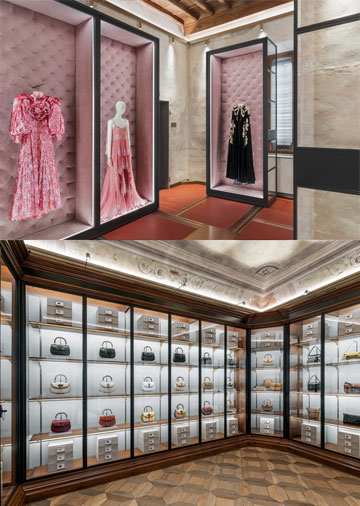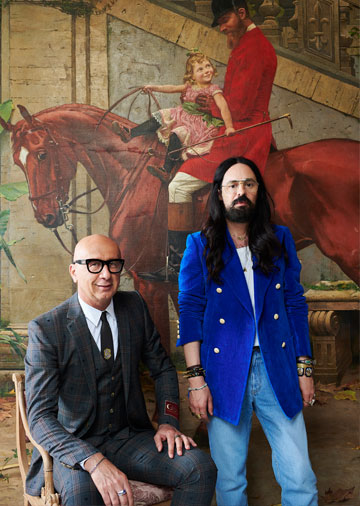
As the House of Gucci celebrates its 100th anniversary, it throws open the doors of the 15th century Palazzo Settimanni in Florence, to house Gucci’s archival collection, a link that inexorably connects a splendorous past heritage with a visionary future.
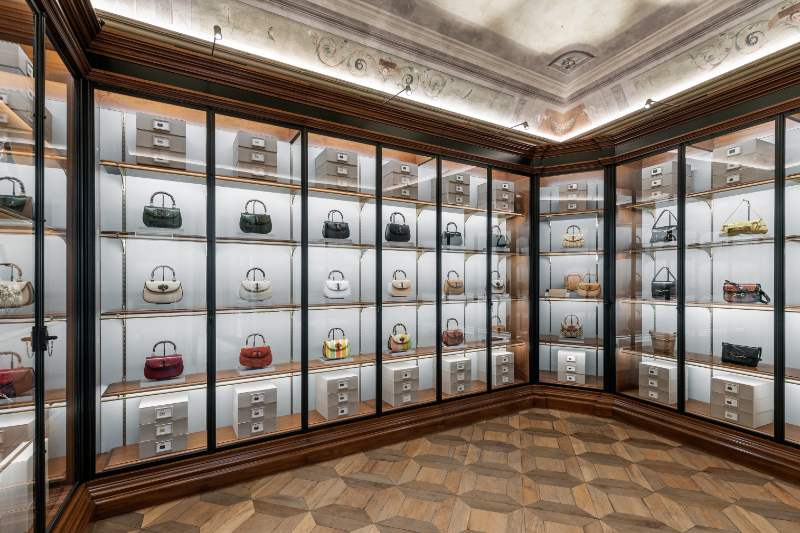 Gucci's collection of vintage handbags at the Palazzo in Florence. Photo by Valentina Sommariva
Gucci's collection of vintage handbags at the Palazzo in Florence. Photo by Valentina Sommariva
It’s well and truly a homecoming. On July 1, Gucci opened the new home of the Gucci archive in Via delle Caldaie in Florence, as the House celebrates its 100th anniversary this year. The archive is now housed in Palazzo Settimanni, a palace which dates back to the 15th century and is located in the Santo Spirito neighbourhood, in the area known as "Oltrarno", on the left bank of the river. This is where artisans and artists had their workshops, and by the 16th century, following the Medici family's move to Palazzo Pitti, they had established themselves alongside the residences of aristocratic families who chose to build their sumptuous homes there.
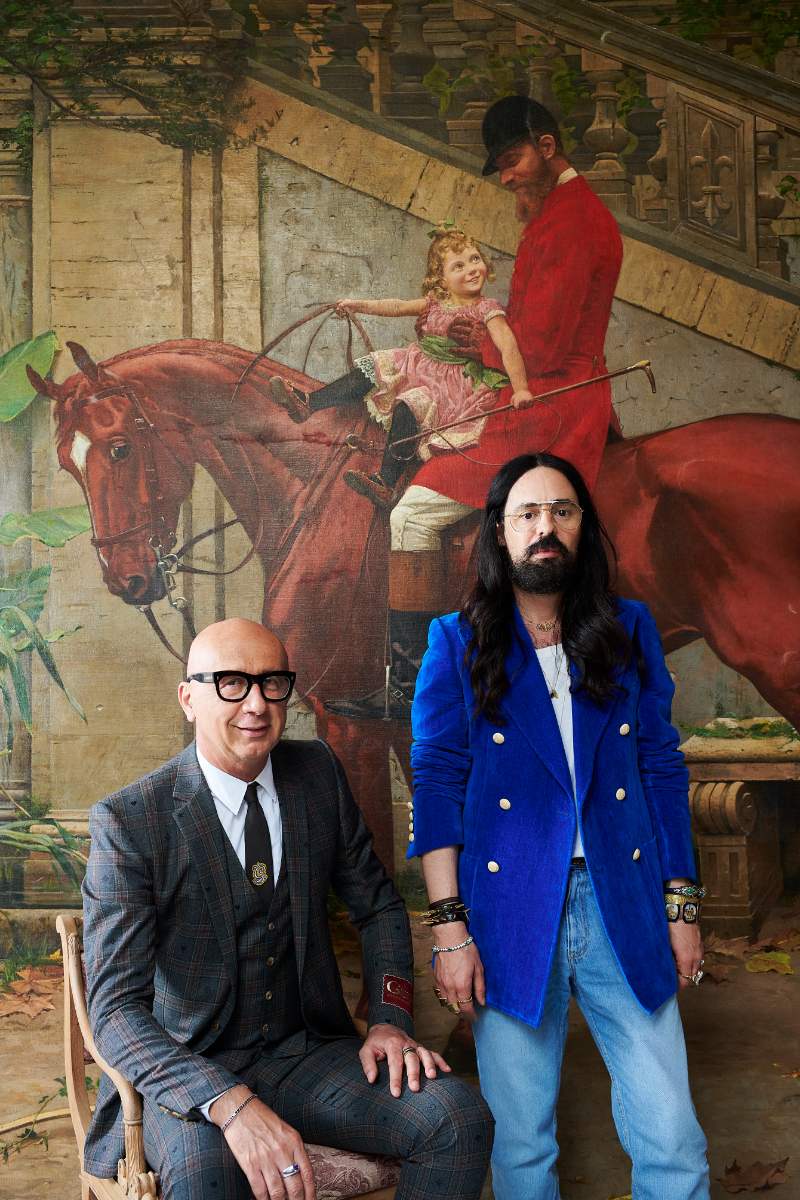 Gucci President and CEO Marco Bizzarri with Creative Director Alessandro Michele in front of Domenico Induno's Fantino con bambina. Oil on canvas, 1860-1870. Photo by Valentina Sommariva
Gucci President and CEO Marco Bizzarri with Creative Director Alessandro Michele in front of Domenico Induno's Fantino con bambina. Oil on canvas, 1860-1870. Photo by Valentina Sommariva
This transformation of the Palazzo’s neighbourhood from working-class district to sophisticated urban area may warrant a comparison with Gucci's stylistic codes, in which know-how is inextricably intertwined with research, harmony and refinement. "My task was to bring many objects back home, virtually helping them return to the family,” says Alessandro Michele. “To a place which ostensibly preserves the past but which is actually a bridge to the contemporary. An ancient building is a living thing. Like fashion."
Acquired by Gucci in 1953, the Palazzo became an integral part of the brand, both physically and metaphorically. Despite its grandeur, over the centuries the palace proved to be a flexible structure, capable of accommodating additions, splits, partitions, changes of ownership and use. It has served as a factory, a workshop and a showroom. Today, thanks to the refurbishment commissioned and designed by Creative Director Alessandro Michele, the building has not only been restored to its original character but has also been allowed to tell its own story and reveal its multiple identities, becoming the symbol of a dialogue between past and present − the necessary prerequisites for the future. Here, the vision of the creative director has joined that of the archivist, the historian, the anthropologist, the scholar, the psychoanalyst, and the philosopher, eschewing defined boundaries, instead tracing theoretical and experiential paths that go well beyond the displays.
“Palazzo Settimanni, now free of earlier additions, is transformed into a magical place to which I have restored a sense of porousness: you pass through it, air gets in, you can walk through it as if it were a journey. I’m porous, absorbent, permeable”, says Alessandro Michele. “I have restored to the Palazzo a fairy-tale aura which, for instance, allows the small entrance hall to become a gateway to a dream dimension. I envisaged it as a sort of secret place within the House, an inner sanctum from where one sets out for Gucci's holy lands”.
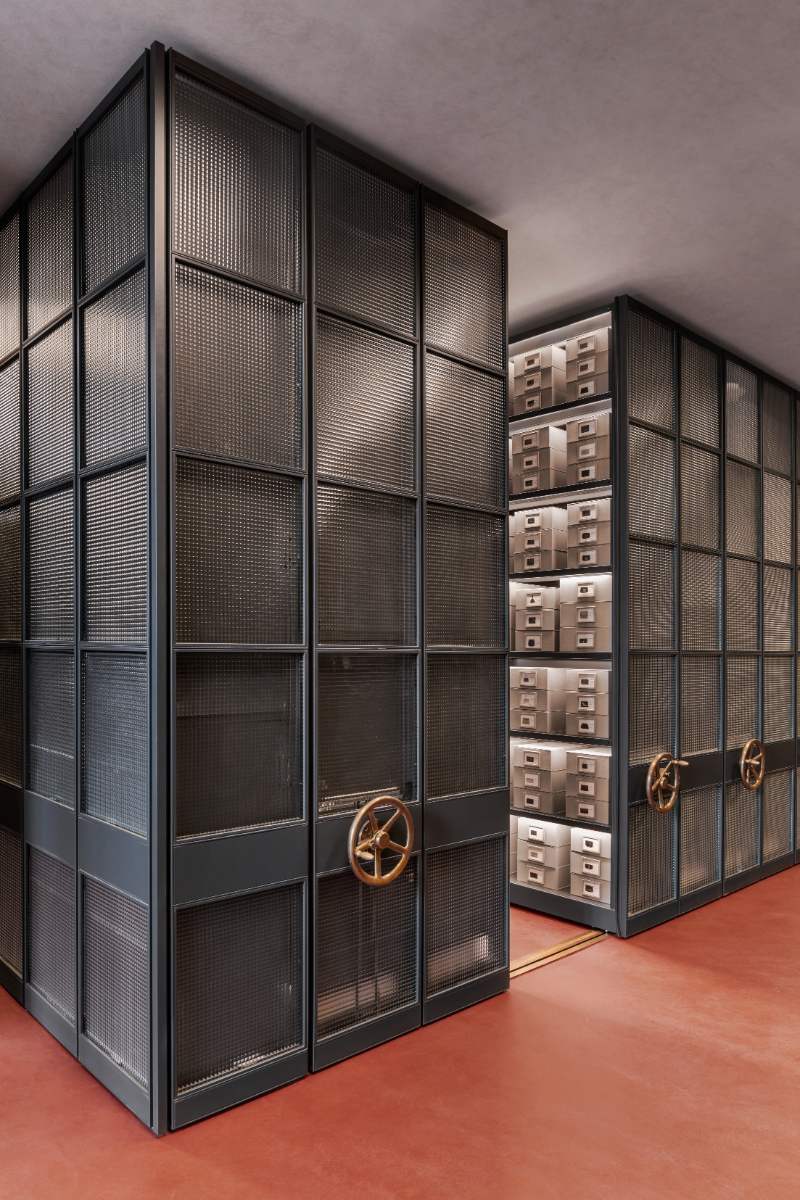 Vaults that house the Gucci archives at the Palazzo Settimani. Photo by Valentina Sommariva
Vaults that house the Gucci archives at the Palazzo Settimani. Photo by Valentina Sommariva
Across the five floors, which include the ground floor and the basement, all the structures accumulated in recent times have been stripped away to reveal vestiges of 19th century decorations, 18th century trompe l'oeil, late 17th century frescoes and even earlier ornamentation; all these elements have been deliberately left intact or restored to their original splendour without being moved or altered. The only significant alteration has been the removal of the canopy in the entrance hall, added in the 1990s, to let in more light and restore the central portico to its original, graceful proportions. Everything has been planned, arranged and designed with the same sensitivity and attention that has informed the entire repurposing of the building as a home for the brand's historic collections: from the furnishings to the details of the handles that replicate a pair of scissors, from the glazed wunderkammer [cabinets of curiosities] to the lamps, the precious cabinetry and the large cupboards in glass and iron.
To achieve this, strong links were maintained with the territory, with all the restoration entrusted to local specialists, including the terracotta floor tiles produced one by one in wood-fired ovens.
Like a treasure chest holding more treasure chests inside, the archive is divided into themed rooms, named after the mantra-like words that are part of Alessandro Michele's lexicon, words chosen to denote certain stages in his creative journey. The basement is divided into three halls, Radura (porcelain and household items), Herbarium (stationery), and Maison de L'Amour (leisure items).
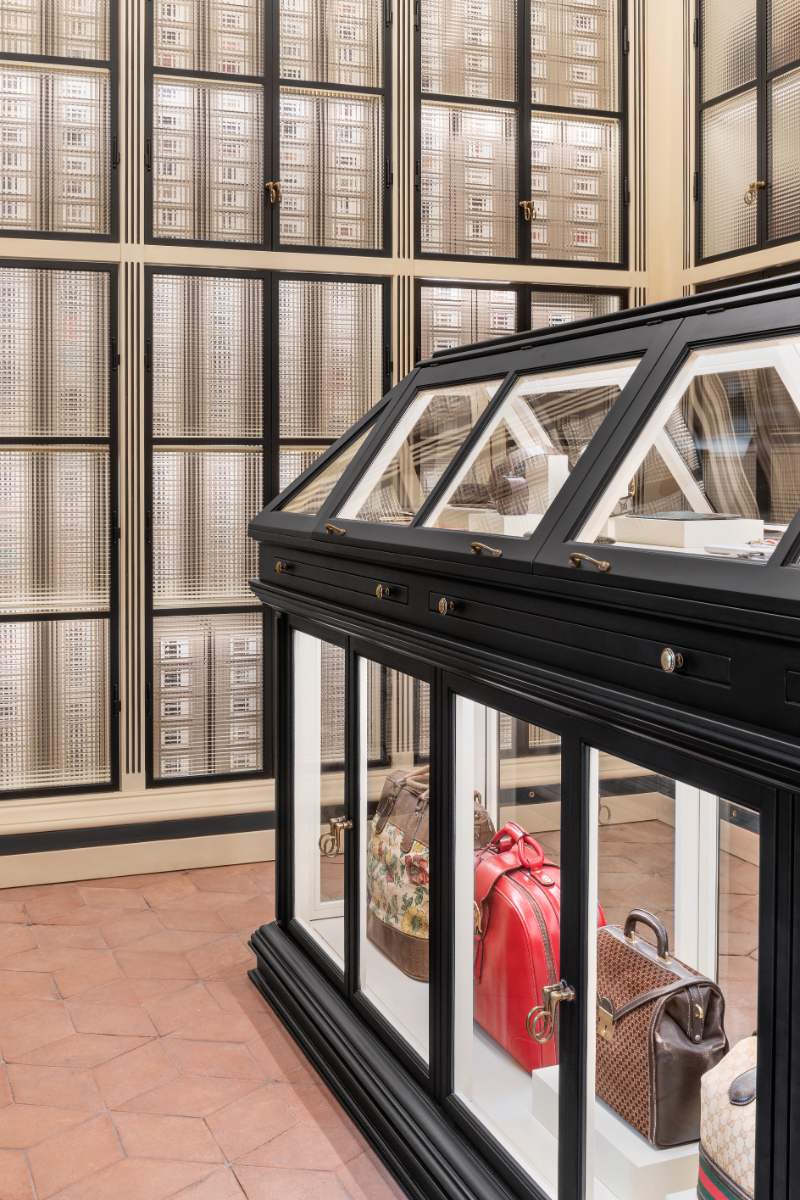 Gucci's vintage handbags encased in glass and iron cases. Photo by Valentina Sommariva
Gucci's vintage handbags encased in glass and iron cases. Photo by Valentina Sommariva
The ground floor houses the collections of vintage handbags (Hortus Deliciarum hall), small leather goods and vintage belts (Prato di Ganimede hall – the field of Ganymede), an exhibition room (Swan hall), vintage and contemporary jewellery (Le Marché des Merveilles hall) and vintage luggage (1921 Rifondazione hall). Textile creations – scarves and dresses – and footwear are housed on the first floor, where the space is divided into rooms with evocative and powerful names, such as Orto di Giove (Jupiter's garden), The Alchemist's Garden, Serapis, and Aveugle par Amour, to name but a few. Lastly, on the second floor, we find the Façonnier des Rêves hall.
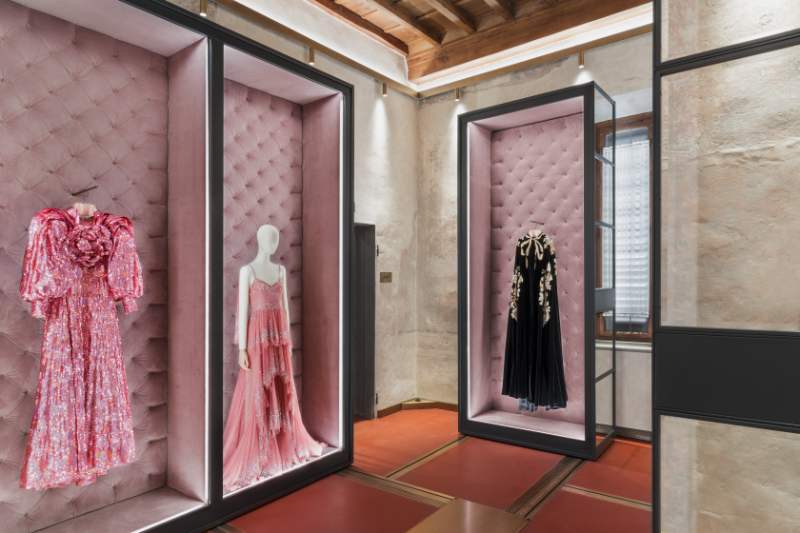 Gucci's textile creations are housed on the first floor. Photo by Valentina Sommariva
Gucci's textile creations are housed on the first floor. Photo by Valentina Sommariva
Most striking is the wall showcasing those styles that have maintained their design codes intact while evolving in step with historical events, such as the Bamboo bag or the Jackie, both presented in different versions and materials. In the adjacent jewellery room, which houses vintage items alongside contemporary collections, the mirrors that cover the walls in their entirety erase the concept of dimension, expanding the space to infinity. A welcome revival are the lifestyle accessories, whose function and design are perfectly contemporary despite being created to complete the brand’s aesthetics some 60 or 70 years ago.
It is precisely this constant dialogue between past and present that generates a focus for study and knowledge, rigour and discipline – one which, right from the entrance, includes fairy-tale elements, graceful divertissements, extraordinary twists and surprising solutions, thereby removing any notion of the object on display as a historical exhibit, instead identifying it as a ‘bridge’ between different cultural and historical realities, housed in a space that acts as an amplifier, being rooted in today's Florence but proudly displaying the evidence of its past.
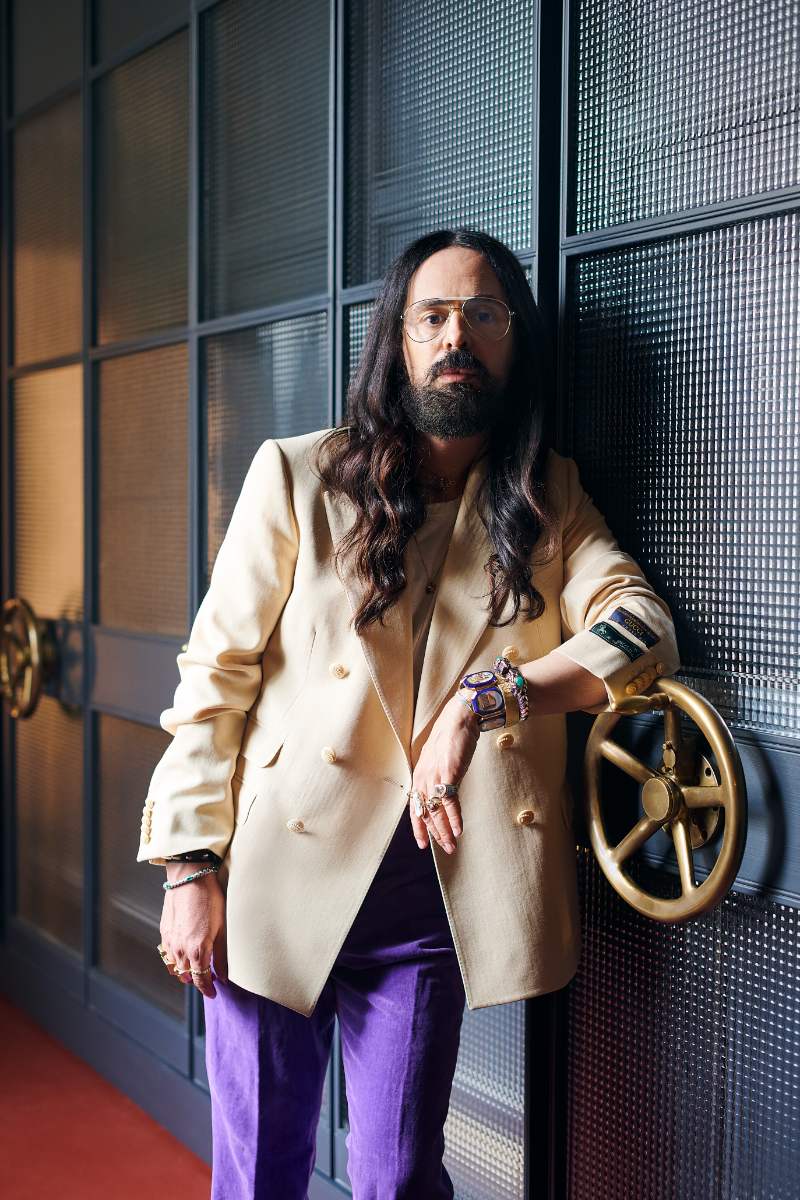 Gucci's Creative Director Alessandro Michele. Photo by Valentina Sommariva
Gucci's Creative Director Alessandro Michele. Photo by Valentina Sommariva
A centre for study and for fostering dialogue with the contemporary, Palazzo Settimanni guards and protects, amuses and surprises, but it is not an organized collection of beautiful artefacts so much as a living, vibrant testimony to an organic, creative, constantly evolving work in progress. “The archive is a memory palace,” says Valerie Steele, director and curator of the museum at the Fashion Institute of Technology, who collaborated on the layout and curation of the public spaces. “Far from being a dusty attic, it is a dynamic system of knowledge production and inspiration. Archives are based on the drive to collect and categorize objects from the past, not because of any nostalgia, but because the style of objects changes over time. This relation to time means that a brand like Gucci, which has a 100-year history, develops archives in order to keep a tangible cultural heritage alive, now and for the future.”
Palazzo Settimanni is also home to Gucci Education, a unique space that offers training opportunities for the brand's employees. A physical location that complements an innovative digital ecosystem, blending traditional learning facilities and new virtual spaces where students may experiment with personalised learning pathways, based on specific needs, interests and abilities. There are also academic programmes such as the Retail Academy, the Supply Chain Academy, the HR Academy and the Digital Academy, and also the École de l'Amour (School of Love), a workshop housed in the ArtLab and in Gucci’s production facilities.
FOLLOW US ON INSTAGRAM

Lifestyle Insider is a kind of junction point, connecting people with diverse interests that touch on the more luxurious aspects of lifestyle – fashion, design, travel, food and spirits, art, watches and jewellery, cars, yachts, and aviation, and technology. People today don’t fit into boxes and categories. In our individual ways, we are interested in diverse themes, products, and the challenges that face our world today. You will judge how well this effort of mine caters to your passions and proclivities.
Lifestyle Insider is a showcase of all that is beautiful and luxe. Behind every creation, is a designer, chef, entrepreneur, or a design maison. I have delved into my own appreciation for objetsde luxe that I have admired over the years – be it a love of fashion from the world’s top Parisian and Italian fashion maisons and their ’90s muses, or the care that goes into sari and Indian textile collections in my own family. Growing up on four continents, as the daughter of a former Indian Ambassador, I’ve seen a remarkable array of historic places and met a myriad people. My aim is to bring my world view into this website, a curation of what I find particularly stunning, unique, and newsworthy.
It’s an exciting time for brands all over the world. With change comes opportunity. With the global ‘reset’ and uncertainty on many fronts, there is a chance to write a new script. Let’s be those pioneers.
A bit about me:
A luxury and fashion journalist with 25 years of experience in publishing and magazine journalism, I have edited some of India’s top fashion and luxury magazines. I got my BA in Comparative Literature from UC Berkeley, and went on to receive my Master’s in English and French from the University of Strasbourg, France. I have also studied German and Film. I live in Gurugram, India, and look forward to once again exploring our world with a new-found freedom.
Priya Kumari Rana
Founder and EditorContact Us
Mail us @ lifestyleinsiderindia@gmail.com
